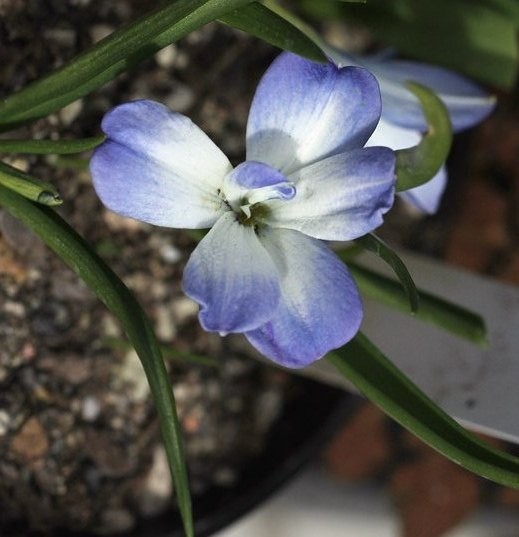Chilean blue crocus
(Tecophilaea cyanocrocus)

Description
Tecophilaea cyanocrocus, the Chilean blue crocus, is a flowering perennial plant that is native to Chile, growing at 2,000 to 3,000 m (6,600 to 9,800 ft) elevation on dry, stony slopes in the Andes mountains. Although it had survived in cultivation due to its use as a greenhouse and landscape plant, it was believed to be extinct in the wild due to overcollecting, overgrazing, and general destruction of habitat, until it was rediscovered in 2001. Both the specific epithet cyanocrocus and the common name "Chilean blue crocus" highlight the plant's passing resemblance to the true crocus. However, the two plants are not closely related, and there is no blue crocus, either in the wild or in cultivation. In its native habitat, the plant blooms from October to November, which is springtime in the Southern Hemisphere. In northern climates, it flowers from February to March. Tecophilaea cyanocrocus grows on stems up to 4 in (10 cm) tall, with 1-3 linear fleshy leaves. The single flowers are approximately 1 in (2.5 cm) across, goblet shaped, and are an unusual deep gentian blue color, with a whitish center. The root is a nearly spherical corm with a fibrous cover. The genus Tecophilaea was named after Tecofila Billiotti, botanical artist and daughter of the botanist Luigi Aloysius Colla of Turin. There are only two species in the genus, the other being Tecophilaea violiflora. The genus was originally placed in the family Amaryllidaceae, eventually being split from that family and becoming the type for the family Tecophilaeaceae. There are a number of cultivars of tecophilaea. Two of these, 'Violacea' with deep purple flowers, and 'Leichtlinii' with white centers to the flowers, have been in cultivation for many years and are well known among bulb fanciers. By crossing these with each other and with the solid blue type form, other cultivars such as 'Storm Cloud' have been developed in recent years. The Tecophilaea cyanocrocus cultivar 'Violacea' should not be confused with the species Tecophilaea violiflora. T. cyanocrocus is hardy in USDA Zones 9-10; in essentially frost-free mild climate areas (e.g. Northern New Zealand, Ireland, much of northern California) Tecophilaea cyanocrocus may be successfully grown in open rock gardens exposed to the weather. However, tecophilaea is somewhat frost-tender and cannot withstand hard freezes.
Taxonomic tree:







